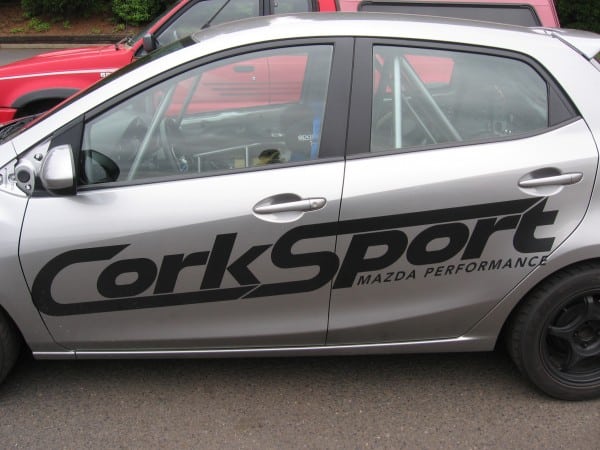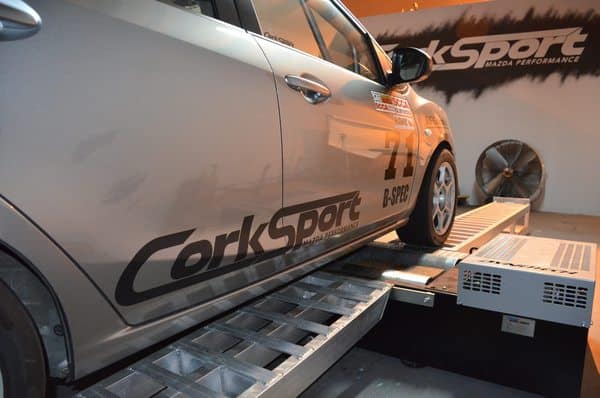So after a long 5 month break it is time to get the CorkSport Mazda 2 and the driver prepped for track abuse again for the 2013 season.
For the Mazda 2 it is pretty easy to take care of being it is a relatively stock car still. Going over the car to check out the bushings, tire rod ends, and the whole chassis to make sure nothing is in need of replacement turned up zero items this year. There are only a few non stock components which we gave an extra once over to make sure they are up to spec as well. The brakes got a really close inspection being that take a huge amount of abuse on the track. The stock rotors and CorkSport pads are still in good shape so only a brake bleed was on the menu for work. With the car getting a clean bill of health it is time to move on to other things.
The next item on the list is to get the Mazda 2 through its annual tech inspection with the SCCA. The inspection covers the safety gear of the car and the driver to make sure nothing has expired in the off season. With our car being built last year the seat, harnesses, and other safety gear in the car passed the inspection with flying colors. They also check the drivers helmet, HANS (head and neck) device and drivers suit to make sure they are suitable.
During the off season our Mazda 2 has been a test mule for several parts which resulted in the suspension being removed from the car and re-installed several times. This has left the suspension out of spec for road racing which required a re-alignment. Thanks to a lifetime alignment at the local Firestone we had everything dialed back it to what we wanted with the -1.5 degrees of front camber and correct toe settings.
One last thing which we needed to do was go over the rule book to make sure there were no surprises for the new year which I did not find.
In the title I mentioned prepping the driver for the new year. Racing is a demanding sport and there wasn’t a trip out on the track where I didn’t come into the pits sweating. Being in good shape requires some out of the car effort which I put in over the off season. Starting in November at roughly 185 lbs I started training daily with cardio to do two things. First was to get my heart into great shape and second was to assist in weight loss. Over the past 3 months I have dropped to a low weight of 158lbs and lowered my body fat to roughly 12.5%. With the cardio work along with other training and change of diet I am in the best shape I have ever been in my life to attack the next season of racing.
We will see how the prep for the car and the driver pays off during the next season of racing. We will be posting updates as the season progresses.
-Derrick





